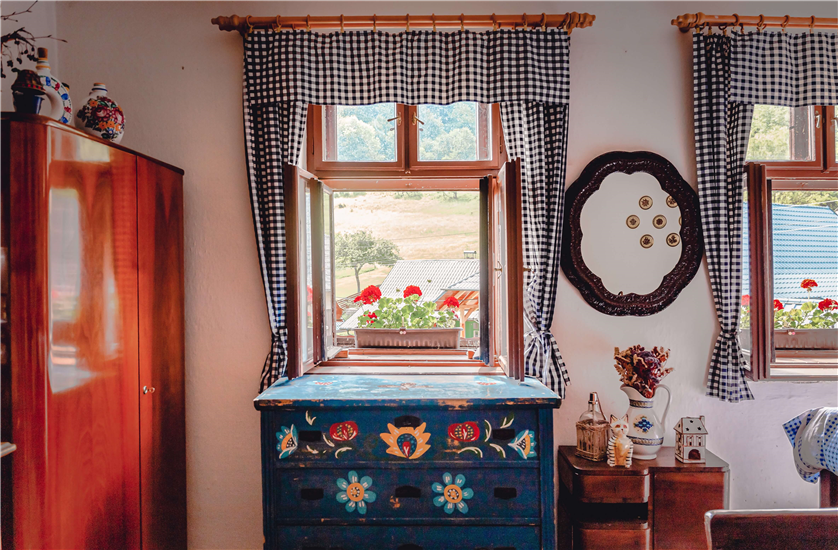In a world of fast furniture trends and disposable decor, there’s a unique charm in giving new life to old pieces. Enter the art of repurposing vintage furniture for a modern look. By blending the old with the new, you can create a one-of-a-kind style that exudes character and adds a touch of nostalgia to your home. Join us as we explore the creativity and ingenuity behind repurposing vintage furniture into modern masterpieces.

Repurposing Old Furniture With Chic Paints and Finishes
When it comes to giving old furniture a new lease on life, nothing beats the power of chic paints and finishes. With some creativity and a little elbow grease, you can transform vintage pieces into stunning focal points for your home.
One of the key elements in repurposing old furniture is choosing the right paint color. Soft pastels like blush pink or mint green can give a feminine touch to a worn-out dresser, while bold hues like navy blue or emerald green can make a statement in a modern living room. Experiment with different color combinations to find the perfect match for your personal style.
Aside from paint, consider adding unique finishes to elevate the look of your repurposed furniture. Metallic accents like gold leaf or silver foil can bring a touch of glamour to a plain side table, while distressed finishes can give a rustic charm to a vintage cabinet. Don’t be afraid to mix and match different techniques to create a truly one-of-a-kind piece.
Mixing Vintage Pieces with Contemporary Decor
One of the most captivating ways to elevate your home decor is by mixing vintage pieces with contemporary design elements. By incorporating old-fashioned furniture with modern decor, you can create a unique and eclectic space that reflects your personal style and tells a story.
To achieve this blend of old and new, consider repurposing vintage furniture to give it a modern twist. For example, you can update a traditional wooden dresser with a fresh coat of paint in a bold color like navy blue or vibrant yellow. Pair it with sleek, minimalist accessories to create a striking contrast that will make the piece stand out in any room.
Another idea is to mix and match different styles and eras by combining a vintage armchair with a contemporary coffee table and a geometric rug. This eclectic approach adds interest and character to your space, creating a dynamic and visually captivating environment. Don’t be afraid to experiment with textures, patterns, and colors to create a harmonious balance between old and new.
By repurposing vintage furniture for a modern look, you can breathe new life into old pieces and create a space that is both stylish and timeless. Whether you’re a fan of mid-century modern or traditional farmhouse style, mixing vintage with contemporary decor is a great way to express your creativity and showcase your individuality.
Bringing New Life to Antique Furniture Through Upholstery
When it comes to antique furniture, there is often a fine line between preserving its historical beauty and making it work for modern living spaces. One way to bridge this gap is through the art of upholstery. By reupholstering vintage pieces, you can bring new life to old furniture and give it a fresh, modern look that fits seamlessly into contemporary decor.
Incorporating Vintage Furniture into Minimalist Design Schemes
One of the most exciting challenges in interior design is finding ways to seamlessly blend vintage furniture into a minimalist design scheme. Repurposing old pieces of furniture can inject character and charm into a modern space, adding layers of history and personality.
When incorporating vintage furniture into a minimalist design, focus on quality over quantity. Choose a few key pieces that have unique shapes or interesting textures to serve as focal points in the room. For example, a rustic wooden armoire or a mid-century modern chair can add a touch of nostalgia to an otherwise sleek and simple space.
To create cohesion between the vintage and modern elements in the room, consider updating the vintage furniture with a fresh coat of paint or new upholstery. Mix and match different styles and eras to create a dynamic and visually appealing space that tells a story. Embrace the beauty of imperfection and celebrate the history of each piece as it adds character to your minimalist design scheme. In conclusion, transforming vintage furniture into pieces that suit modern tastes is not only a fun and creative challenge, but also a sustainable way to update your living space. By repurposing and upcycling old pieces, you not only give them a new lease on life but also add a unique touch to your home decor. So next time you come across a piece of vintage furniture, don’t hesitate to get your creative juices flowing and give it a modern makeover that will surely impress and inspire. Embrace the beauty of the past with a touch of present flair!


